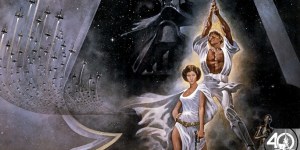We are a week out from the Peacock and theatrical release of Halloween Ends, which seems like as good a time as any to reflect on the truly bonkers timeline and continuity of the Halloween film franchise. Beginning in 1978, the franchise includes 13 installments and, in spite of only one full-on reboot, there are five distinct timelines represented. How does that work? Well, while there has only been one real reboot, there have been plenty of retcons, resulting in strange, mutant timelines where the history of Michael Myers’s bloody rampage becomes a kind of strange “choose your own slaughter.”
Videos by ComicBook.com
Maybe the strangest thing about it all is that, at present, the “canon” timeline of the Halloween franchise only includes four movies…and only one made before 2018. But let’s not get ahead of ourselves. We’ll break it down.
In Halloween, a masked lunatic, later revealed to be mental hospital inmate Michael Myers, goes on a killing spree in Haddonfield, Illinois, on Halloween night. While this movie doesn’t “count” in Rob Zombie’s mid-2000s reboot timeline, and its ties to Halloween III: Season of the Witch is tenuous, it’s the only film that absolutely, definitely happened in all three of the key Michael Myers timelines.
Halloween II takes place on the same night. After Michael’s apparent death, he gets up and starts killing again, and at one point in the film, it’s revealed that Laurie Strode (Jamie Lee Curtis), the “final girl” from the first Halloween, is actually his long-lost sister — something even Laurie didn’t know. For years after this, Michael’s obsession with ending his own bloodline would be a key motivation for the slasher.
Halloween III: Season of the Witch came next, and after having ended two consecutive movies by “killing” Michael Myers, the producers decided to try and transform the series into an anthology. In this movie, rather than a slasher, there’s an evil Halloween costume corporation with a dastardly plot to kill people using microchips hidden in masks, and a fragment of Stonehenge. It failed pretty spectacularly, and took the idea of Halloween as an anthology series with it, but it has since become a cult favorite. Because this movie does not feature Michael Myers, it is often considered to be in its own timeline, with some hardcore fans just calling it the “anthology timeline.” There have been nods to Season of the Witch and Silver Shamrock Novelties in other movies in the Halloween franchise, but those have always been treated more as Easter eggs than any firm connection to the Michael Myers films.
OK. So far, we’re three movies in. There’s one timeline that features the two Michael Myers movies, and one that features just Season of the Witch. Let’s keep going, because it does get more confusing.
Following Halloween III‘s disappointing box office, the fourth film was mandated to bring Michael Myers back to the series. So Halloween 4: The Return of Michael Myers did just that, and started a new trilogy that would continue the timeline of the original two movies. As The Return of Michael Myers, The Revenge of Michael Myers, and The Curse of Michael Myers played out, the new trilogy revealed that Michael Myers’ evil and his apparent supernatural abilities, are tied to the Curse of Thorn, which bestows great power upon someone who was possessed by it, dating back to the time of the druids. Those carrying out the curse will have an identifying rune — in Michael’s case, a tattoo — that some fans have noted resembles a stylized icon of a cartoon witch’s hat, but is in fact a represenation of a centuries-old Norse rune.
Because the Curse of Thorn is what drives Michael in this trilogy, one can reasonably call a continuity that starts with Halloween (1978) and ends with 1995’s Halloween: The Curse of Michael Myers as the “Thorn Timeline.” Key aspects of the Thorn Trilogy that differentiate it from other movies that would come later include the existence of Jamie Lloyd (Laurie’s daughter, played by Danielle Harris, then later J.C. Brandy) and the death of Laurie offscreen due to a car accident…because Jamie Lee Curtis thought she was finished with the role and didn’t want to come back.
Following the Thorn Trilogy, producers struggled to come up with an idea for a new direction to take the franchise. While the Thorn Trilogy and Michael’s return had done better than Season of the Witch, they still weren’t the kind of massive hits, either financially or critically, that the studio wanted.
Re-enter Laurie Strode…and enter the first major retcon of the Halloween series.
In 1998, Curtis decided to come back one last time for Halloween H20: 20 Years Later, a sequel that scrubbed the Thorn Trilogy from continuity, and took place in a world where Michael had vanished after Halloween II. Laurie didn’t have a daughter named Jamie, but instead a son, John Tate (Josh Hartnett). In Halloween H20, Laurie and John are living anonymously in a town far away from Haddonfield, when her brother discovers she is still alive and sets about hunting her down. They have an epic final showdown at the school where Laurie has been working under an assumed name, and she manages to save John and his girlfriend. Michael is apparently dead, but Laurie knows better. She steals the coroner’s van, crashes it, and decapitates Michael, seemingly ending their feud forever.
So, for those keeping track: The Thorn timeline includes Halloween, Halloween II, 4, 5, and 6. The Anthology Timeline is home to the Michael Myers-less Halloween III: Season of the Witch, and 1998 brought us the H20 Timeline, which ignores everything after Halloween II, and then grafts Halloween H20 onto that timeline. A sequel to H20, titled Halloween: Resurrection, came out in 2002, but poor critical and box office reception then ended that timeline.
So, after H20 ended the initial sequel timeline, plus killed off Laurie in the opening moments of Resurrection, what’s next? A reboot, of course. In 2007, filmmaker Rob Zombie released Halloween, which retold the original film’s story through Zombie’s own grimy, ultra-violent style. That film retained the original Halloween II twist that Michael and Laurie were siblings, and made enough money to earn a sequel. But like H20, two movies was all Zombie managed to get out of the franchise before his take on the mythology ran out of gas in 2009. And thus ends the fourth Halloween timeline, the Zombie Timeline.
Re-enter Laurie Strode…and enter what is now the third major retcon of the Halloween series, but the final one up to this point.
In 2018, filmmaker David Gordon Green released Halloween, a legacy sequel that brought back Laurie Strode. You might think this would put the movie back into the H20 timeline, answering the lingering question of what ever happened to John Tate and carrying on the story of Michael Myers’ familial obsession.
But you’d be wrong.
In the years after Halloween II, original Halloween and Halloween II director John Carpenter called the decision to make Michael and Laurie into siblings a “terrible, stupid idea,” and suggested that he may have come up with it while he was drunk. So when David Gordon Green and Jamie Lee Curtis returned to the franchise in 2018, they didn’t celebrate the 20th anniversary of Halloween H20; they eradicated the H20 timeline — and everything after the original Halloween itself — from the series’ timeline.
In the new timeline, Laurie and Michael are not related. Laurie waited 40 years before ever battling Michael again, and in the interim, she had a daughter — who is named Karen, not Jamie. The events of the Thorn timeline never happened; the events of the Zombie timeline never happened; the events of the H20 timeline never happened. It’s arguable that some version of Halloween III may have happened, as Halloween Kills featured a cameo by some Silver Shamrock masks, but in all likelihood, that’s out of the timeline, too.
So, the current Halloween timeline? It goes Halloween (1978) – Halloween (2018) – Halloween Kills – Halloween Ends. And that leaves not just 9 of the 13 Halloween movies, but four of the series’ five timelines, totally out of canon.
That’s pretty wild for a series that doesn’t even have time-travel.








